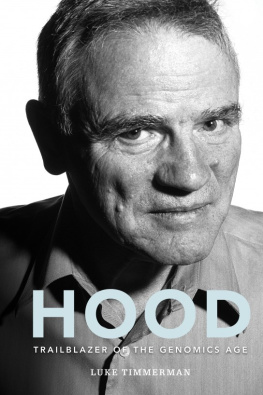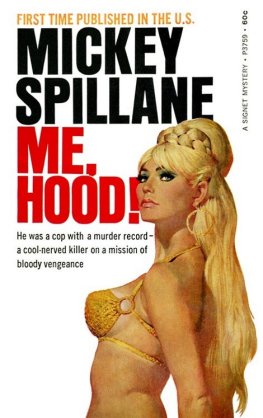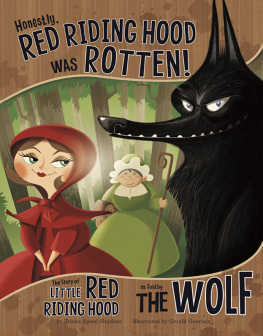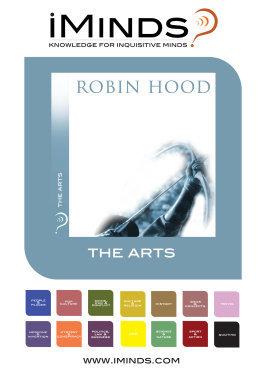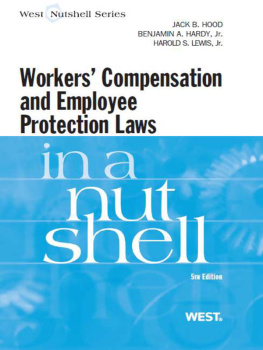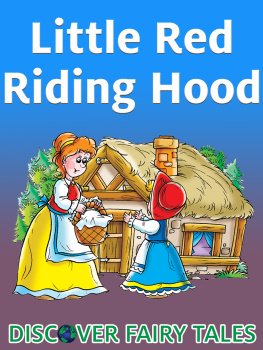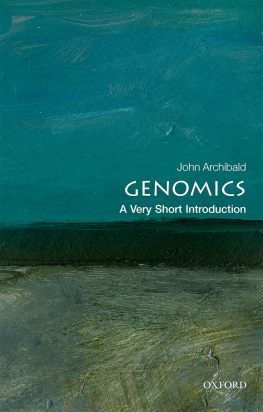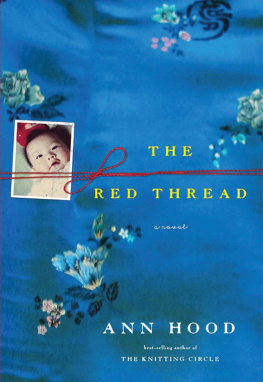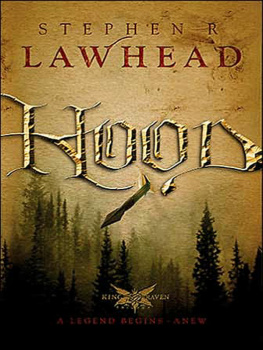Hood
Trailblazer of the GenomicsAge
LUKE TIMMERMAN
Foreword by George Church
HOOD. Copyright 2016 by Luke D.Timmerman
All rights reserved.
Printed in the United States of America.
No part of this book may be used orreproduced in any manner whatsoever without written permissionexcept in the case of brief quotations embodied in criticalarticles or reviews.
Requests for permission should be addressedto ldtimmerman@gmail.com.
Library of Congress Control Number:2016910928
ISBN 978-0-9977093-1-5
10 9 8 7 6 5 4 3 2 1
Edited by Tracy Cutchlow & RobertSimison
Please purchase only authorized electroniceditions and do not participate in or encourage electronic piracyof copyrighted materials. Your support of the authors rights isappreciated.
New directions in science
are launched by new tools
much more often than by new concepts.
The effect of a concept-drivenrevolution
is to explain old things in new ways.
The effect of a tool-driven revolution
is to discover new things
that have to be explained.
FreemanDyson,
Imagined Worlds
Table of Contents
Foreword by GeorgeChurch
Preface
Chapter 1: Mr. Gates, IQuit
Chapter 2: Growing Up in Big SkyCountry
Chapter 3: The Golden Boy ofShelby
Chapter 4: Welcome to the BigTime
Chapter 5: The Making of a YoungBiologist
Chapter 6: A Rising Star for theBiotech Era
Chapter 7: The First BigMachine
Chapter 8: Building anEmpire
Chapter 9: Competing for the BigPrize
Chapter 10: The Invention ThatSparked a Revolution
Chapter 11: The Clash atCaltech
Chapter 12: A FreshStart in Seattle
Chapter 13: New Frontiers, BoldPromises
Chapter 14: A MessyDivorce
Chapter 15: Start-upDays
Chapter 16: A Visionary, Not aManager
Epilogue: Legacy of a ScientificEntrepreneur
Acknowledgments
Endnotes
FOREWORD
Willing Shoulders: A Personal View of Lee Hood
Only seven years after publishing his firstpaper, Lee Hood was a big deal in biology. He had already becomesynonymous with studying antibodies, using the protein chemistrythat was common then. The unusual thing about Lee was that hewasnt afraid to embrace the engineering side of science.Bioengineering was barely a field, generally concerned withnutrition and plastic prosthetic limbs. Genetic engineering was aterm hardly used, just before the dawn of recombinant DNA. In fact,engineer was not a term bestowed with glory or genius: it wasaround this time that rocket engineers renamed themselves rocketscientists. Young biologists who wanted to develop bettertechniques in the lab were destined to become lowly technicians.Lee was already beginning to change that. He was making it sociallyacceptable (and, to some of us, irresistible) to engineerinstruments for biology.
I first met Lee around 1978, when he visitedthe Harvard BioLabs and gave a talk in one of our small conferencerooms. He was obsessed with DNA cloning and sequencing, even thoughall of his work was in proteins. Lee had just published a paper inNature that did little to dispel the fact that he was anoutsider in the field of DNA, while those of us he was talking toin the room were quite familiarincluding the ultimate insider,Wally Gilbert. But somehow you could already see that Lee had avery attractive vision for where DNA could go: automation. Noteveryone shared his vision, of course. As a grad student in Wallyslab, I had just written some software to read DNA sequencesautomatically using a drum scanner, and when I proudly showed itaround, one person said, Why do you want to automate reading? Itsthe only part of DNA sequencing thats fun.
But Lee already knew very well why, and hesteadily began working to bring his vision to fruition. Lee had asimply stated set of four goals: to enable the automated readingand writing of proteins and of DNA. His greatest contribution tobiology was aggregating teams to accomplish these goals. By July1984, he published a paper in Nature titled A MicrochemicalFacility for the Analysis and Synthesis of Genes and Proteins. Itnailed three of the four quadrants. Two years later, the title ofLees June 1986 Nature paper beckoned with the termautomated DNA sequence analysis. But, in his enthusiasm, he hadoversold. I could not find any automation. The reactions and gelswere done manually, the data came like chart recordings, and thesewere interpreted by pencil on the charts. Soon, however,collaborating with Applied Biosystems to commercialize a DNAsequencer, Lee nailed it. The quadrants were full. Yet theinnovation continued: ink-jet printing of DNA arrays,next-generation sequencing, mass spectrometry for proteomics.
The enthusiasm Lee brings to biology spreadswell beyond the engineering of instruments. He has helped establishmore than a dozen biotech companies. He is happy to sit oncompanies scientific advisory boards, some of which we work ontogether: Genomatica, Complete Genomics, Cellular Dynamics,MyMercuryRisk, Nabsys, and AbVitro. He is passionate about P4medicine: predictive, preventive, personalized, and participatory.He has established a standard for sharing data worldwide. And yethe still hasnt forgotten about those coming up behind him.
Lee has for many decades helped createprograms for teaching biology and biotech to high school students.He has written textbooks for undergraduates (which I used even ifmy courses did not assign them). When Lee first arrived in Seattlein 1992, he wanted high school students across the state ofWashington to learn DNA sequencing hands-on. High school! Hands-on!How? Clearly not using the radioactive technique that was commonthen, nor using his own expensive invention, the ABI sequencer.Instead, he chose a nonradioactive version of my eight-year-oldgenomic sequencing method. I was stunned and thrilled. The mostimportant thing to Lee was sharing his enthusiasm and encouragingpeople to participate. I would say that this still encapsulates Leeto this day.
George Church
Professor of Genetics
Harvard Medical School
Preface
Reporting for this book started in the fallof 2012, but it truly goes back more than a decade. I first met LeeHood when I was a kid reporter at the Seattle Times in 2001.He was in his early sixties, one of the worlds best-knownbiologists and biotech entrepreneurs. He was building an institutedoing some biology I didnt understand. His place in history wassecure as the man who developed the machine that made the HumanGenome Project possible, but he wouldnt rest on his laurels. Hewas a blur of energy, a force of personality stronger than anyscientist or CEO I had interviewed, before or since. Hisentrepreneurial drive was the source of his greatness and histroubles: Bill Gates recruited him to the University of Washington,which he later quit in a huff. People either admired the man ordespised him. I wanted to know more.
Over the next decade, I wrote dozens ofstories about Hood. He was generous with his time. He made biologyclear, understandable, and even adventurousunlike the drudgery Irecalled from high school. We had some disagreements over storiesbut nothing unusual.
Genomics, as I worked on this book,continued to advance at a breathtaking pace. Google-backed 23andMeraised public awareness of the genomes influence on health, cheapDNA sequencing technologies were improving at a rate faster thanMoores law, and a few promising drugs had hit the market. Dramaalso continued to follow Hood: his institute had financialtroubles.
Hood had told a romanticized version of hisstory in public talks, but my goal was to dig deeper, to arrive ata nuanced, balanced portrayal. This book is not an officiallyauthorized biography, but an independent work of journalism basedon more than thirty hours of interviews with Hood, plus interviewswith more than one hundred friends, family, and critics. I havereviewed thousands of pages of documents, including Hoodspeer-reviewed publications, letters, memos, and internal e-mails. Itraveled to his boyhood home in Montana, the place of his greatestaccomplishments in Southern California, and his home in Seattle.While I began the book chronologically, Hoods whirlwind careerbecame too convoluted for that. The latter chapters are arranged bysubject; I revisit certain time periods several times.
Next page
